Related Research Articles
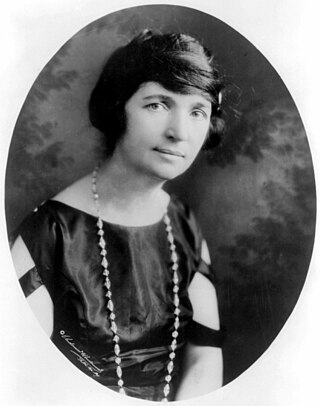
Margaret Higgins Sanger, also known as Margaret Sanger Slee, was an American birth control activist, sex educator, writer, and nurse. Sanger popularized the term "birth control", opened the first birth control clinic in the United States, and established organizations that evolved into the Planned Parenthood Federation of America.
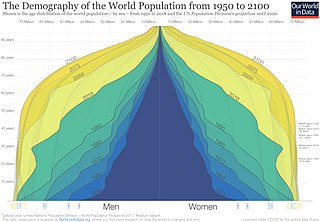
Demography, also known as Demographics, is the statistical study of populations, especially human beings.
In demography, demographic transition is a phenomenon and theory which refers to the historical shift from high birth rates and high death rates in societies with minimal technology, education and economic development, to low birth rates and low death rates in societies with advanced technology, education and economic development, as well as the stages between these two scenarios. In economic growth, the demographic transition has swept the world over the past two centuries,and the unprecedented population growth of the post-Malthusian period was reversed, reducing birth rates and population growth significantly in all regions of the world, and enabling economies to translate more of the gains of factor accumulation and technological progress into per capita income growth. The demographic transition strengthens economic growth process by three changes: (i) reduced dilution of capital and land stock, (ii) increased investment in human capital, and (iii) increased size of the labor force relative to the total population and changed age population distribution. Although this shift has occurred in many industrialized countries, the theory and model are frequently imprecise when applied to individual countries due to specific social, political and economic factors affecting particular populations.
Zero population growth, sometimes abbreviated ZPG, is a condition of demographic balance where the number of people in a specified population neither grows nor declines; that is, the number of births plus in-migrants equals the number of deaths plus out-migrants. ZPG has been a prominent political movement since the 1960s.
The United Nations coordinated an International Conference on Population and Development (ICPD) in Cairo, Egypt, on 5–13 September 1994. Its resulting Programme of Action is the steering document for the United Nations Population Fund (UNFPA).

Raymond Pearl was an American biologist, regarded as one of the founders of biogerontology. He spent most of his career at Johns Hopkins University in Baltimore. Pearl was a prolific writer of academic books, papers and articles, as well as a committed populariser and communicator of science. At his death, 841 publications were listed against his name. An early eugenicist, he eventually became an important critic of eugenics. He also advanced the concept of carrying capacity, although he didn't use the term, and was a Malthusian concerned with resource limits. He was a critique of mass consumption.
The American Birth Control League (ABCL) was founded by Margaret Sanger in 1921 at the First American Birth Control Conference in New York City. The organization promoted the founding of birth control clinics and encouraged women to control their own fertility. In 1942, the league became the Planned Parenthood Federation of America.

The International Planned Parenthood Federation (IPPF) is a global non-governmental organisation with the broad aims of promoting sexual and reproductive health, and advocating the right of individuals to make their own choices in family planning. It was first formed in 1952 in Bombay, India, by Margaret Sanger and Lady Rama Rau at the Third International Conference on Planned Parenthood with support of an expanding population with limited resources. Presently, it consists of more than 149 Member Associations working in more than 189 countries. The IPPF is highly developed and organised into six regions. The organisation is based in London, England.
Human overpopulation describes a concern that human populations may become too large to be sustained by their environment or resources in the long term. The topic is usually discussed in the context of world population, though it may concern individual nations, regions, and cities.
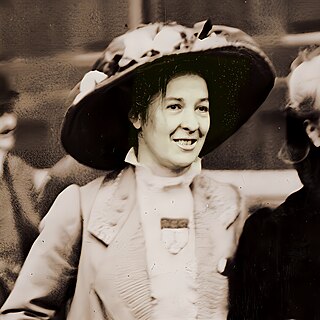
Edith How-Martyn was a British suffragette and a member of the Women's Social and Political Union (WSPU). She was arrested in 1906 for attempting to make a speech in the House of Commons. This was one of the first acts of suffragette militancy. She met Margaret Sanger in 1915 and they created a conference in Geneva. How-Martyn toured India talking about birth control. She had no children and died in Australia.
Sir Bernard Mallet, was a British civil servant. He served in three departments: the Treasury 1886–1897, Inland Revenue 1897–1907 and General Register Office from 1907.
Frank Wallace Notestein was an American demographer who contributed significantly to the development of the science. He was the founding director of the Office of Population Research at Princeton University, and later president of the Population Council. He was the first director-consultant of the Population Division of the United Nations from 1947–1948.
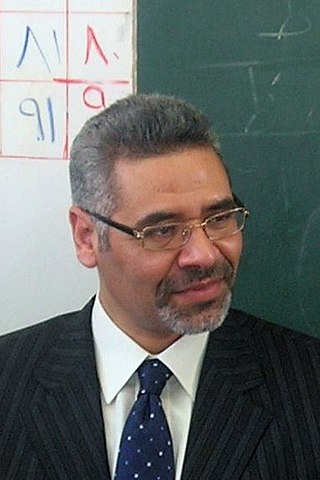
Ayman Zohry is a demographer/geographer and expert on migration studies based in Cairo, Egypt. He was born in Souhag, Egypt. Zohry received his Ph.D. from the University of Sussex in 2002. He is a leading researcher in the field of migration studies in Egypt with a special focus on irregular migration.

Dr. Magued Osman is the CEO and Director of the Egyptian Center for Public Opinion Research "Baseera," which ran the only transparent public opinion surveys by phone for the first Egyptian Presidential elections in 2012. Baseera implemented also the first exit poll in the middle east. Dr. Osman is a member of Egypt National Council for Women. Dr.Osman is acting as the chairman of Telecom Egypt (we), the main landlines service provider in Egypt, since 2016.
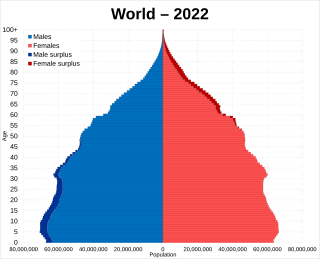
Earth has a human population of over 8 billion as of 2023, with an overall population density of 50 people per km2, excluding Antarctica. Nearly 60% of the world's population lives in Asia, with almost 2.8 billion in the countries of China and India combined. The percentage shares of China, India and rest of South Asia of the world population have remained at similar levels for the last few thousand years of recorded history. The world's literacy rate has increased dramatically in the last 40 years, from 66.7% in 1979 to 86.3% today. Lower literacy levels are mostly attributable to poverty. Lower literacy rates are found mostly in South Asia and Sub-Saharan Africa. The world's largest ethnic group is Han Chinese, constituting over 19% of the global population in 2011. In terms of the largest number of native speakers, Mandarin is the world's most spoken language.

The birth control movement in the United States was a social reform campaign beginning in 1914 that aimed to increase the availability of contraception in the U.S. through education and legalization. The movement began in 1914 when a group of political radicals in New York City, led by Emma Goldman, Mary Dennett, and Margaret Sanger, became concerned about the hardships that childbirth and self-induced abortions brought to low-income women. Since contraception was considered to be obscene at the time, the activists targeted the Comstock laws, which prohibited distribution of any "obscene, lewd, and/or lascivious" materials through the mail. Hoping to provoke a favorable legal decision, Sanger deliberately broke the law by distributing The Woman Rebel, a newsletter containing a discussion of contraception. In 1916, Sanger opened the first birth control clinic in the United States, but the clinic was immediately shut down by police, and Sanger was sentenced to 30 days in jail.
Political demography is the study of the relationship between politics and population change. Population change is driven by classic demographic mechanisms – birth, death, age structure, and migration.
Since the establishment of the United Nations (UN) in 1945, three official international conferences on population have been held, and two other conferences on population have been convened. This followed the first ever World Population Conference was in Geneva from 29 August to 3 September 1927, organized by the League of Nations and Margaret Sanger.
The Population Association of America (PAA) is a non-profit scientific professional association dedicated to the study of issues related to population and demography. The PAA was established by Henry Pratt Fairchild and Frederick Osborn, with funds secured by Margaret Sanger from the Milbank Memorial Fund. In its early years, the PAA was a coalition of population scientists, birth control activists, immigration restrictionists, and eugenicists.
John P. M. Bongaarts is a Dutch-American demographer. He serves as Vice-President and Distinguished Scholar at the Population Council, where he has worked since the 1970s. Bongaart has performed research in a diverse set of topics, such as population growth and aging, mortality, population-environment links and demography related to the epidemiology of HIV/AIDS. His most recognized work lies in the field of fertility, and has been a topic of interest throughout his career.
References
- ↑ ""From Geneva to Cairo: Margaret Sanger and the First World Population Conference"". NYU Edu. Retrieved 14 October 2019.
- ↑ "United Nations Population Division | Department of Economic and Social Affairs". www.un.org. Retrieved 2019-10-14.
- ↑ Sanger, Margaret (1927). Proceedings of the World Population Conference. London: Edward Arnold & Co. pp. 363–68.
- ↑ G., E. (May 1928). "Review of The Proceedings of the World Population Conference, by Margaret Sanger". Pacific Affairs . 1 (1): 28. doi:10.2307/3035202. JSTOR 3035202.
- ↑ Drysdale, C. V. (October 1927). "The First World Population Conferrnce: Some Impressions". Birth Control Review. XI (10): 255.
- ↑ "Margaret Sanger | Biography, Birth Control, & Significance". Encyclopedia Britannica. Retrieved 2019-10-14.
- ↑ Margaret Sanger Papers Project (Spring 1994). "From Geneva to Cairo: Margaret Sanger and the First World Population Conference". Margaret Sanger Papers Project Newsletter. Retrieved 2013-04-26.